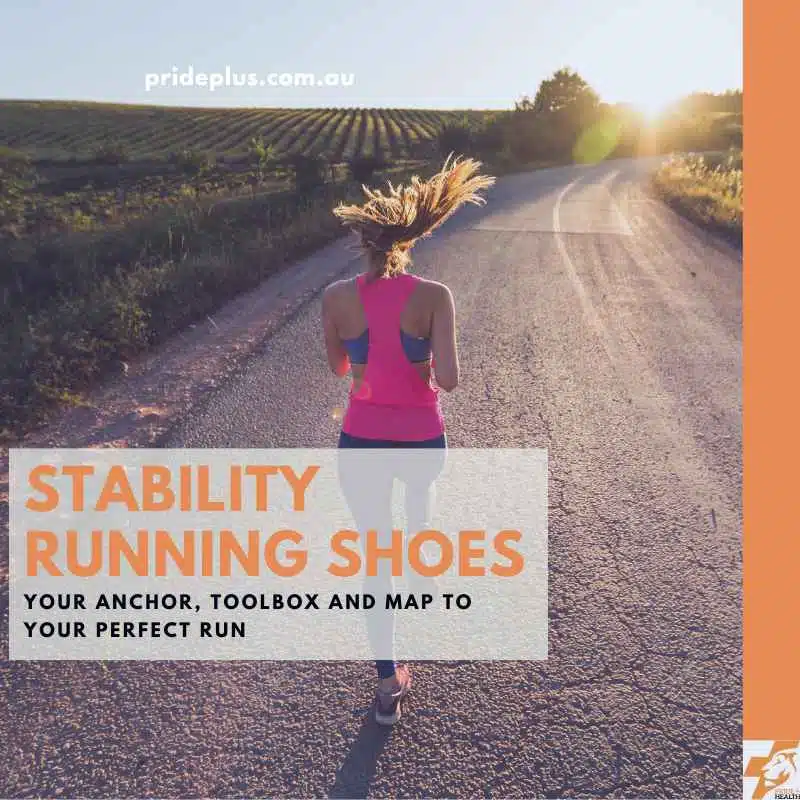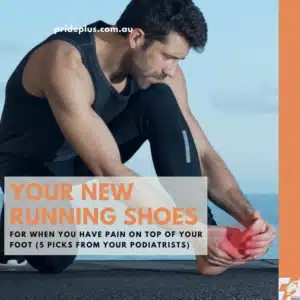As a story-obsessed podiatrist, I’ve found the quest for the best stability running shoe for both myself and my clients to be full of pitfalls.
There’s almost as much jargon and confusion from running shoe brands that keeping up with the lingo is like trying to remember who that character on screen is when watching Game of Thrones. Wait, are they friends? Enemies? Siblings?
But friends, gather close. I can help. Here’s where our podiatry clients across Melbourne are succeeding when it comes to choosing the best stability running shoes for their runs.
Let’s get into it.
Picture this: You’re on a quest to find the perfect running shoe, but navigating the endless sea of choices feels like steering a ship through stormy waters. You hear that the Kayano is the best, but someone else said you need an Adrenaline. But Brooks is too narrow. No, they are too wide. Help.
Enter the unsung heroes of running shoes: stability shoes, in all their glory (fits and sizes).
In this post, we’ll delve into the fascinating world of stability shoes and explore how they can be your anchor, toolbox, and map, guiding you to smoother sailing and an enhanced running experience.
The Anchor
Just like a trusty anchor steadies a ship in turbulent waters, stability shoes provide the support and structure needed to keep you stable on your running journey.
Designed to support excessive foot motion, these shoes act as a counterbalance for the pronation and supination movement by your feet. No more fear of drifting off course or getting injured—your stability shoe anchor has got you covered.
The Toolbox
But what if I told you that the world of stability shoes is more than meets the eye?
That’s right! It’s a diverse and ever-evolving toolbox, brimming with ingenious tools to help you tackle your running challenges.
From traditional methods like medial posts and heel counters to cutting-edge techniques like guide rails, sidewalls, sole flare, and internal sole geometry, there’s a solution tailored to every runner’s needs.
So, gear up and find the perfect spanner —or shoe, in this case—for your running journey.
The Map
Now that we’ve established the importance of stability shoes, it’s time for an adventure.
And this adventure comes with a map, you’re on an odyssey to find your perfect fit. You’ve got a guide in your podiatrist from PridePlus Health who stays up to date with the latest tools and developments the brands are using to help you run your best.
Then there are the signposts you have along the way. Do you need stability shoes that help you with a specific injury?
These guides will help:
- Running shoes for heel pain
- Running shoes for ball of foot pain
- Running shoes for Achilles tendonitis
- Running shoes for pain on the top of the foot
- And find even more shoe guides from your podiatrists
Our 3 favourite stability running shoes (right now)
OK, so you just want to know what the foot experts are recommending to wear?
By now I hope we’ve imparted that many unique factors go into stability running shoes being right for you and wrong for someone else. Just because you’re fatiguing and at risk of injury in one area of your foot, doesn’t mean that every stability shoe will be able to help you.
So, it’s with a giant caveat that we generalise when we say these are our 3 favourite stability running shoes on the market right now.
Asics Kayano 29
It’s been 29 years of the Kayano from Asics and it feels like a rebirth with the latest model.
Yes, you still get a dual-density midsole (although very different posting positions compared with the Kayano’s from the teens to early 20s. But now, Asics are shedding weight and adding stability in other ways as well.
There’s the extension of the heel counter medially. Sidewalls extend down both the medial and lateral sides of the upper as well. The outsole has reinforced rubber on just the medial aspect of the arch for further stability.
All in all, the Kayano 29 Asics has thrown the kitchen sink at being stable for long, slow runs (or walks) whilst listening to their critics by reducing the weight of their premium stability running shoe.
Brooks Adrenaline 22
I have a soft spot in my heart for the Adrenaline as it was the first shoe I’d ever run a half marathon in.
That shoe, well over 10 years ago would be unrecognisable in terms of stability features when compared to the Adrenaline 22.
GuideRails are the way Brooks delivers an incredibly supportive running shoe in the Adrenaline where they extend the midsole up around the medial and lateral sides of your feet. This support is primarily located near the rearfoot which makes the Adrenaline perfect for those who need support during the early heel contact into the midstance phase of running.
New Balance 860v13
The 860v13 (yes, if you’re not a numbers person New Balance shoes can sometimes get a bit confusing) has heaps of stability features both modern and traditional.
There’s the traditional dual-density posting with firm foams making up a big hunk of the medial midsole.
On the modern side, New Balance has built large sidewalls that extend from the rear foot down to the midfoot for extra stability as well as a full contact outsole.
Understanding stability running shoe jargon
If you’re still with us you’re a true OG running shoe nuffie like myself – it’s a pleasure and an honour to still have your attention. Want to go even deeper? Let’s look at what features and lingo the different brands are using for their stability shoes right now.
Brooks
Brooks uses what they call GuideRails these days as their stability feature.
A Guide Rail is an extension of the midsole foam extending down the medial and lateral sides of the shoes. This is thought to provide an opposing force to limit the foot from leaning too far into pronation during midstance or supination during propulsion.
Mizuno
The Wave Plate has been a staple of Mizuno for many years where curvy (waved) thermoplastic is placed within the midsole. Bigger curves on the medial side of the shoe leave it stiffer and flatter curves on the lateral aspect leave it softer.
In more recent years Mizuno has created their own Wave Foam as well where they combine softer foams with stiffer foams that wrap around the heel and medial aspect of the shoe.
On Running
On Running have a unique midsole technology with lots of tubular-like cutaways that provide ingenious shock absorption with less bulk.
In their stability running shoe models, they also use a Guidance line, a separation of the medial and lateral aspects of the sole to discourage the sole from compressing too much in one area when loaded. There’s also a “Speedboard” in many of their models that provide more stability through propulsion by stiffening the forefoot.
Asics
For what feels like an eternity, Asics was all about the dual-density midsole.
Stiff foam (traditionally grey) sat within soft foam (traditionally white). For years it was like this. Then, they started changing the colours, but still, it was stiff foams medially in soft foams everywhere else.
In what is an absolutely exciting breakthrough for runners (and podiatrists who have countless clients wanting to run in Asics shoes only) they have developed more modern and lighter versions of their stability shoes.
Yes, you can still get a dual-density midsole (although not in the grey/white combo unless you’re getting a nostalgic vintage shoe). But now, you can get wide midsoles with a sole flare as well. This is where the midsole sits flared or thicker on one side to stiffen that area for more support compared with the other side.
Hoka
Hoka uses a higher side wall in many of their shoes where the midsole wraps up the upper along the sides of the shoes. Then there’s their J-Frame which is a stiffer material of foam, shaped like a J which sits within the midsole to stiffen the shoe medially.
Before you go
If you’re a runner and looking for a new pair of shoes you must check out our podiatrist-recommended list of shoes before you make your next purchase. And if you’re currently struggling with a running injury you can get started on your road to recovery by booking your session with your podiatrist in Melbourne, Pascoe Vale podiatry clinic or Emerald Podiatry clinics.
About the author

Tim Mulholland is a runner first, running shoe nuffie second, and podiatrist and clinical academic a distant third. It’s this priority list that sees him purchase shoe after shoe to run in (despite the protests from his partner and the overflowing shoe cupboard).




